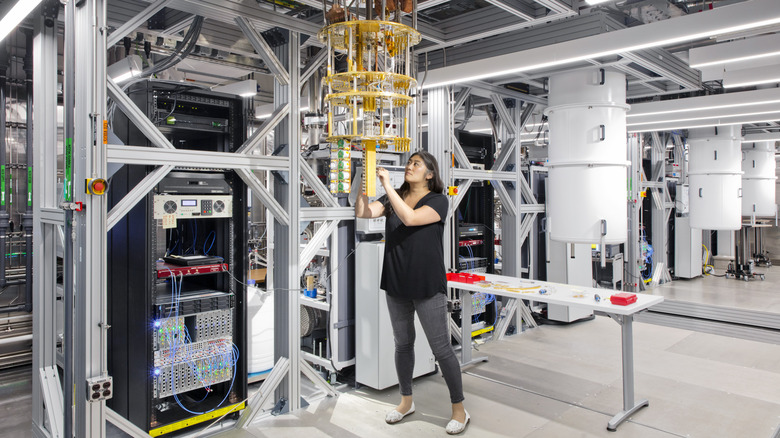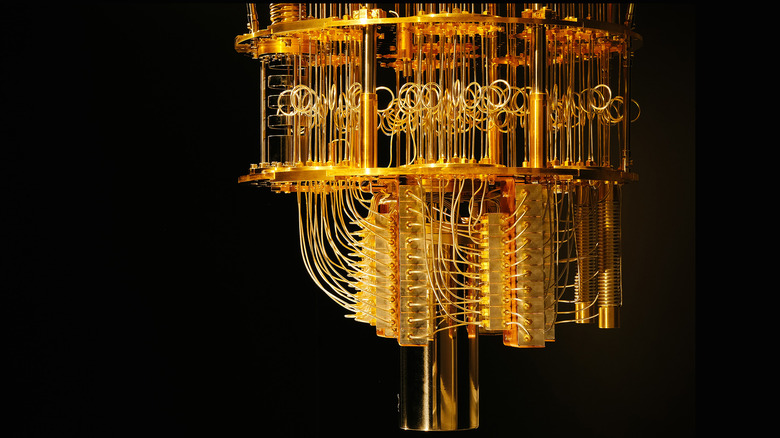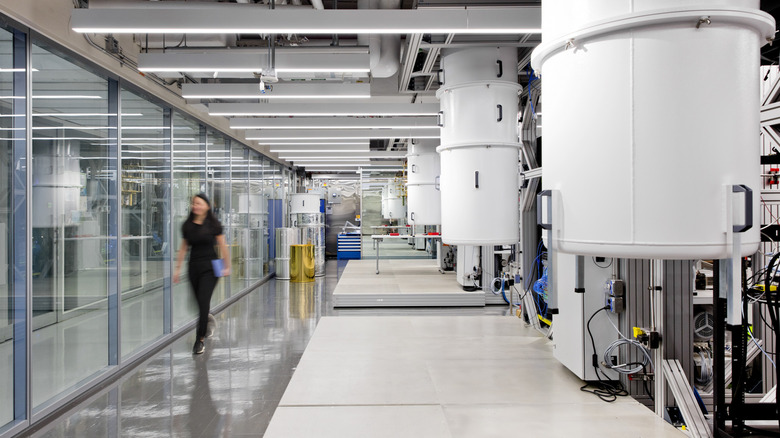This Quantum Computer Could Be 20,000 Times Faster Than Anything Before
Quantum computing is one of those technologies where real-world applications always seem to lie just over the horizon. The next big thing is announced before quickly becoming a forgotten article from yesterday's news, and the world moves on and forgets all about quantum computing. Until the next time. However, behind the scenes, these breakthroughs are not forgotten, and according to IBM, there is now a clear roadmap to building a practical and fault-tolerant quantum computer. IBM, one of the most important names in computer history, says its Quantum Starling computer will be running by 2029, and they expect it to perform 20,000 times more operations than current quantum computers.
To get a sense of how this increase compares to traditional computers, we can examine another IBM Starling statistic. Simulating the computational state of the Starling would require the memory of a staggering quindecillion of the world's supercomputers (that's 10 followed by 48 zeros!). Perhaps "Startling" would have been a more appropriate name. According to IBM CEO Arvind Krishna, "IBM is charting the next frontier in quantum computing." However, only time will tell if this is the real breakthrough that will finally see quantum computing emerge over the horizon and into real-world applications. Let's have a closer look at IBM's quantum roadmap and the route to a practical, fault-tolerant, and scalable quantum computer.
IBM's quantum computing roadmap
The Quantum Starling computer is one of the main goals of IBM's quantum computing roadmap. The system is currently being built at IBM's facility in Poughkeepsie, New York. The large-scale, fault-tolerant computer is expected to be capable of running 100 million quantum operations using 200 logical qubits. To achieve this, IBM has set out a series of goals beginning in 2025 with the delivery of a series of quantum and high-performance computing tools (HPC) that will run on a new quantum processor called Nighthawk. By 2026, IBM aims to enable the first instance of "quantum advantage" using a quantum/HPC hybrid computer (Quantum advantage is a broad term that defines a point where quantum computers outperform classical computers.)
The main goal for 2027 and 2028 is to improve the circuit quality to 15,000 gates and for development to continue with the ambition of delivering Starling by 2029. However, this is not the end of the company's roadmap. The Starling is to be the foundation for the next step up — the IBM Quantum Blue Jay — a machine that is expected to be able to perform a billion quantum operations over 2,000 logical qubits. This is expected to happen from 2033 onwards. These are bold goals — but to understand what they mean, it helps to step back and look at how quantum computing actually works. What exactly is a qubit, and why is it so different from the bits we know?
The fundamentals of quantum computing
You don't have to be a physicist or a mathematician to understand quantum computing, but it certainly helps. However, let's see if we can break down the fundamentals of quantum computing into simple terms. Traditional computers are digital machines where a "bit" is represented by one of two states — it can either be a one or a zero. Quantum computers use qubits, which can also be a one or a zero — but with a twist. Thanks to a property called superposition, a qubit can be both at the same time. On top of that, qubits can become entangled, meaning the state of one qubit is linked to the state of another. (Best not to ask why — it's just one of those weird quantum things.) While this may sound abstract, things get interesting when qubits work together.
When qubits are entangled, the information they can hold grows exponentially. For example, two qubits can represent four different combinations at once, three qubits can represent eight, and so on. By the time you have 100 qubits, the number is astronomical, and this is what makes quantum computers so powerful and incredibly fast. While you're unlikely to be rushing out to buy the latest qubit iPhone any time soon, IBM expects real-world applications of such processing power to include advances in "drug development, materials discovery, chemistry, and optimization."


